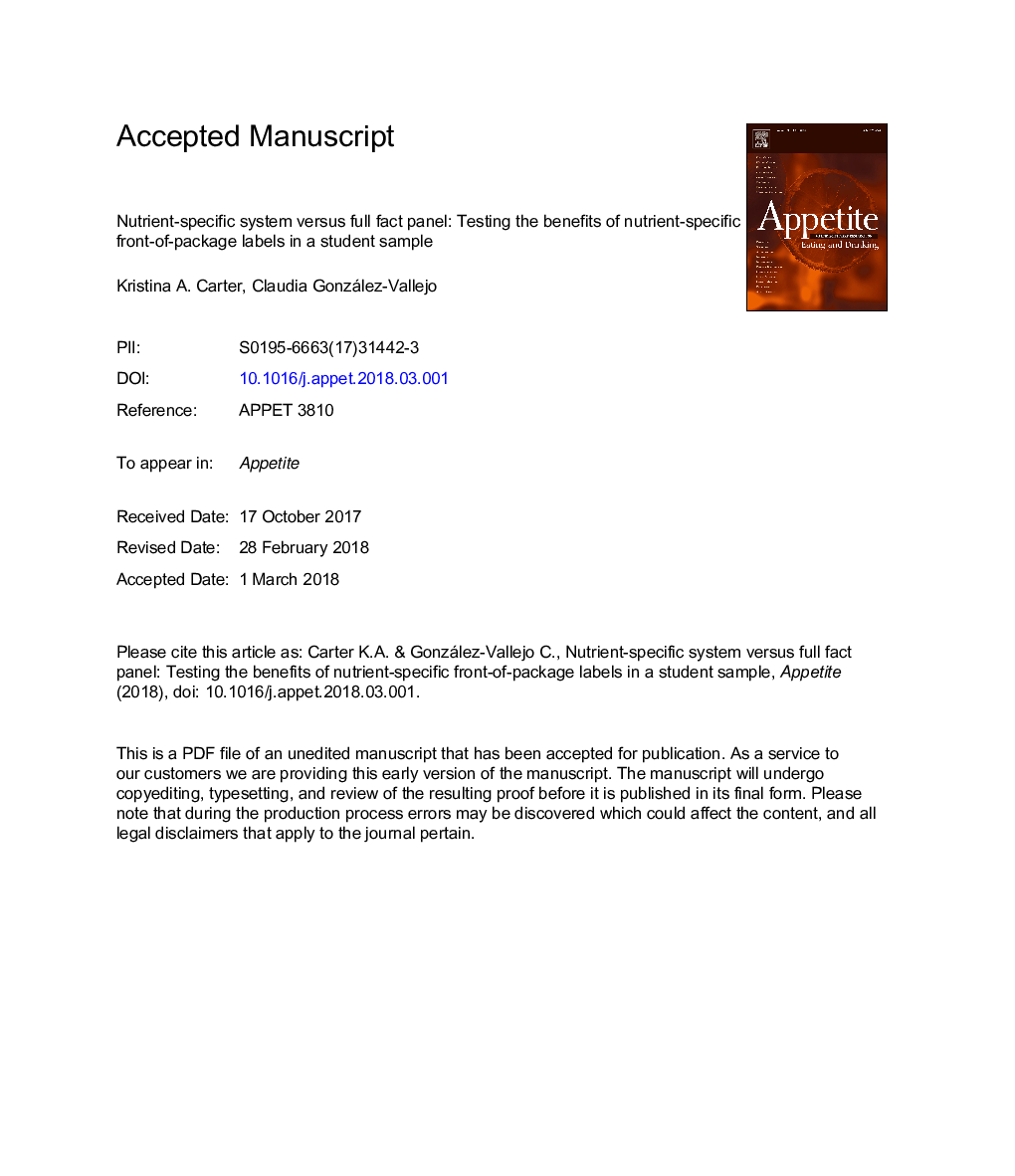| Article ID | Journal | Published Year | Pages | File Type |
|---|---|---|---|---|
| 7305906 | Appetite | 2018 | 52 Pages |
Abstract
Current food labels include comprehensive nutritional information, but evaluations of their effects on judgments of nutritional quality and food choice are scarce. Building on previous empirical research that demonstrated that amount and complexity of information is negatively related to judgment accuracy, this study used an experimental design to evaluate nutritional information labels of varying complexity. Lens model analysis (Brunswik, 1952; Cooksey, 1996; Hammond, 1955; Stewart, 1976) was used to study the judgment process. Nutrition judgment accuracy was assessed by comparing nutrition judgments to a nutrition expert criterion (NuVal®) in three package labeling conditions. The conditions were: no nutritional information highlighted; nutrients highly related to nutritional quality highlighted using a front-of-package (FOP) label; and nutrients unrelated to nutritional quality highlighted using a FOP label. Findings indicate a limited role of FOP labeling in increasing judgment accuracy, consistency of nutritional information usage, and food choice. Implications for understanding labeling efforts to improve food choices are discussed.
Keywords
Related Topics
Life Sciences
Agricultural and Biological Sciences
Food Science
Authors
Kristina A. Carter, Claudia González-Vallejo,
